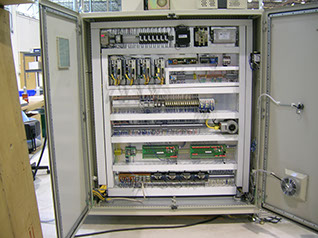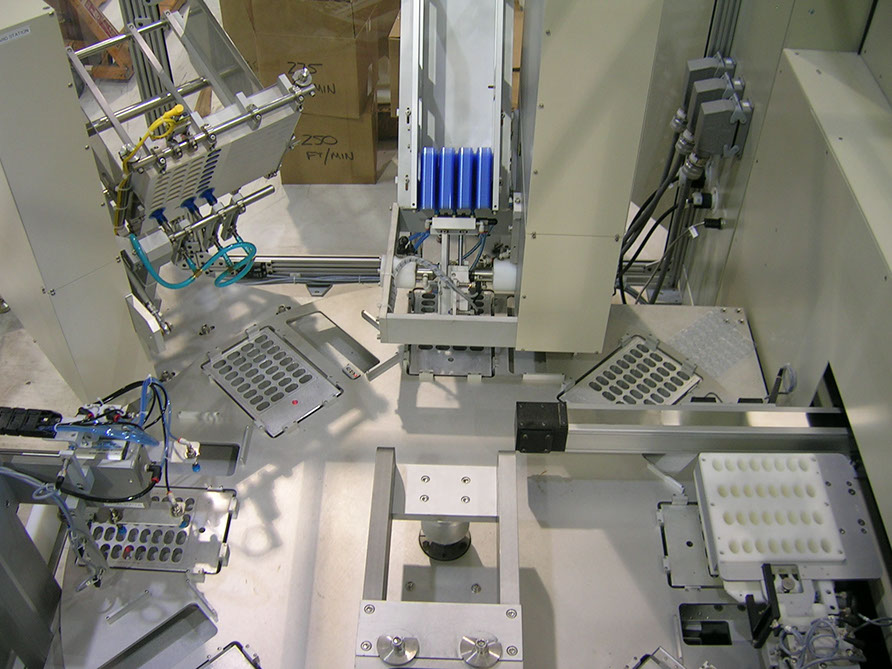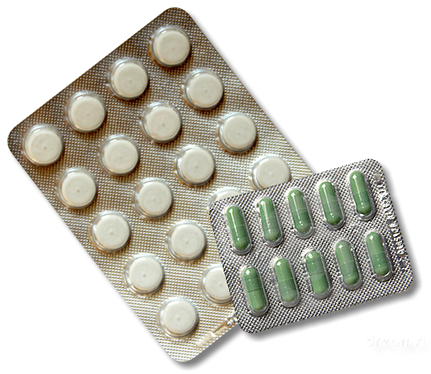Client Writeups
MTS Medication Technologies
SID-TEC redesign solves production speed and reliability problems for MTS Technologies medication blister pack machine…


ABOVE: An 8-station rotary medication blister pack automated assembly machine designed for MTS Technologies / Omnicell by SID-TEC of Florida.
PROJECT CHALLENGES
PROBLEM ONE: How to put 32 pills into a blister pack card, seal and label it, and to produce 20 blister cards per minute.
PROBLEM TWO: How to be able to put a selection of up to 100 different types of medications into the cards.
MTS Medication Technologies creates automation machinery that it sells to medication manufacturers and large scale medication prescribers.
MTS’s existing machinery, while workable, used a linear in-line flow path which didn’t have the speed required for rapid, large scale production that could be easily customized for their customers needs. SID-TEC was hired to design, program and build a manufacturing machine that was fast and easily re-programmable to solve both of the problems listed above.
The customer had found a partial solution to problem 2 by purchasing an existing unit which could dispense up to 200 different medications, but it did not work properly for rapid output with MTS’s in-line blister packaging machine.
The High-Production Circular Solution
To maximize timing and production, we designed a circular table (see large image above) with 8 separate stations capable of working each station simultaneously. This replaced the in-line method they had previously been using. Machining the table top, with its high tolerances, proved to be problematic using usual CNC milling machines and laser cutting techniques. To solve the problem we used a high-pressure, low-temperature water jet milling technique that delivered a perfectly flat and smooth surface with custom cutouts for each of the 8 stations.
Timing and Speed Solutions
To maximize production speeds, we worked on the longest station cycles to reduce the time for each function. Transferring the medications from the dispensing units to the rotary table was one of the biggest bottlenecks to overcome. Different medications had different distances to travel, from about 3 feet to the furthest at about 7 feet. We called this function “the shuttle” and it was the most challenging to solve. We developed a high-speed shuttle mechanism capable of reaching upwards of 70 miles per hour (113 kph).

Solving the shuttle’s tendency to throw pills all over the place
Due to the high speed of the shuttle accelerating up to 70 mph, then coming to a full stop over a 7 foot distance the shuttle tended to throw the medications out into the bottom of the machine. Shuttle acceleration and deceleration were fine-tuned to allow rapid movement, while keeping all different types of pills and capsules in place in the shuttle. This can be adjusted and programmed to accommodate the varying sizes, weights and materials used in each type of medication.
Pressure and heat sealing time reductions
The slowest station of the cycle was found to be the sealing station where the pressure and heat are used create an air-tight sanitary seal between the backing and the blister plastic. Timing was eventually reduced to only 2 to 2.5 seconds for the procedure.
Technical controllers and specifications
A separate part was designed and built to rotate, align and apply a printed label onto the card and then load them into container ready for removal from the machine.
The initial machines were built with 3 separate PLC’c (Programmable Logic Controllers). This was done to insure the cycle scan times were within 3 to 5 milliseconds, the servo systems were handled by a 4- axis motion controller and the interface was created using a single touch screen control panel.
Meeting the specification of 20 cards per minute: The M&M challenge…
There were very many challenges in the development of these automated pharmacy machines. All were successfully overcome and the prototype machine was able to produce 20 cards per minute, as specified by MTS.
 We weren’t allowed to use actual medications during the development process, so M&M candies were used as substitutes. However, because of the varying sizes, weights and materials used in the various medications, we had to build into the machine the ability to accommodate and adjust for bounce characteristics of each medication.
We weren’t allowed to use actual medications during the development process, so M&M candies were used as substitutes. However, because of the varying sizes, weights and materials used in the various medications, we had to build into the machine the ability to accommodate and adjust for bounce characteristics of each medication.
CLIENT TESTIMONIAL:

